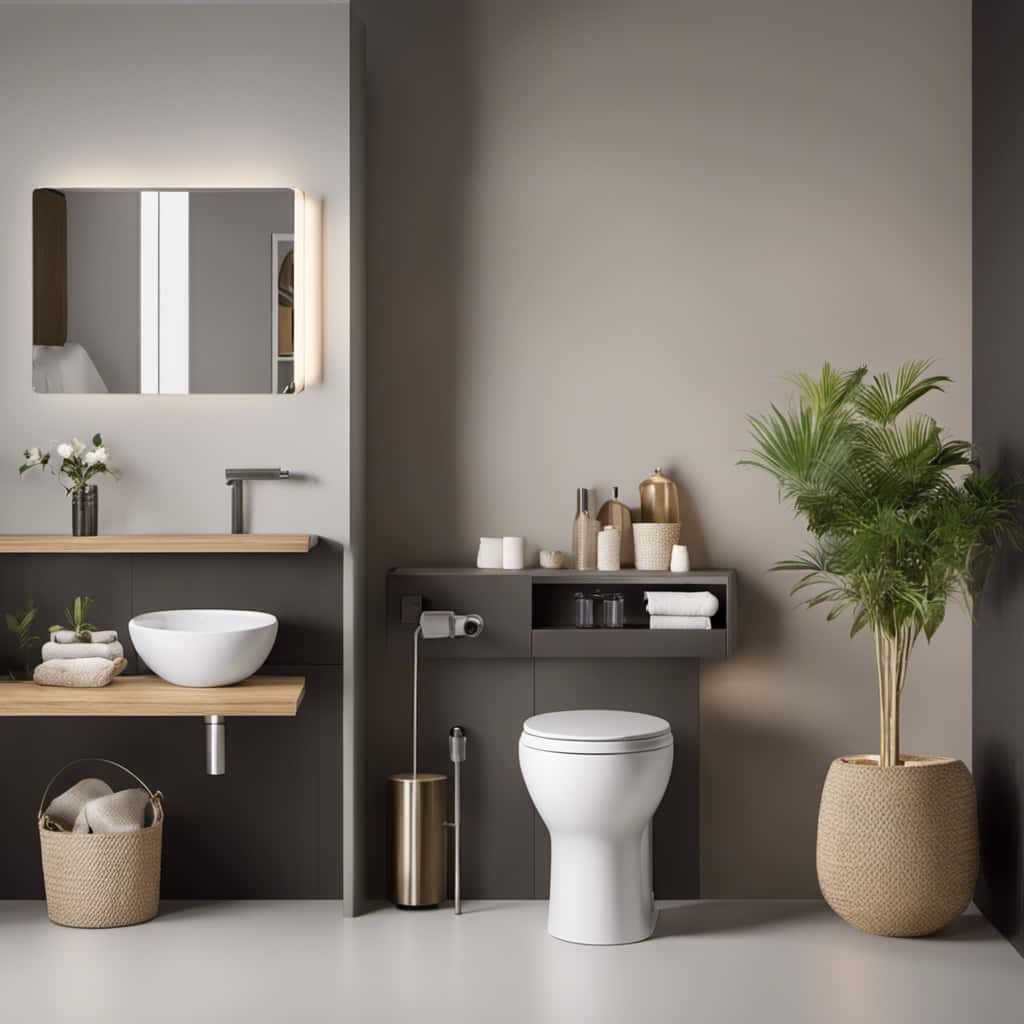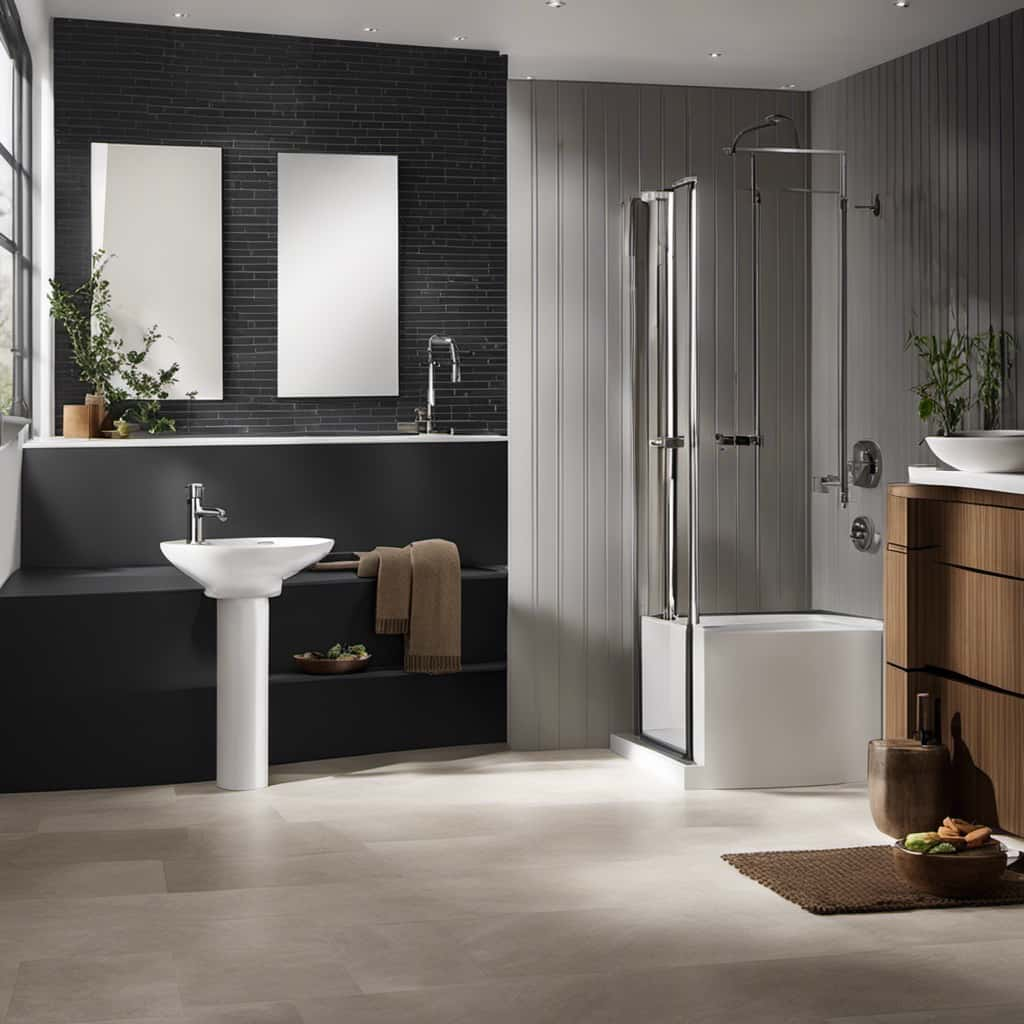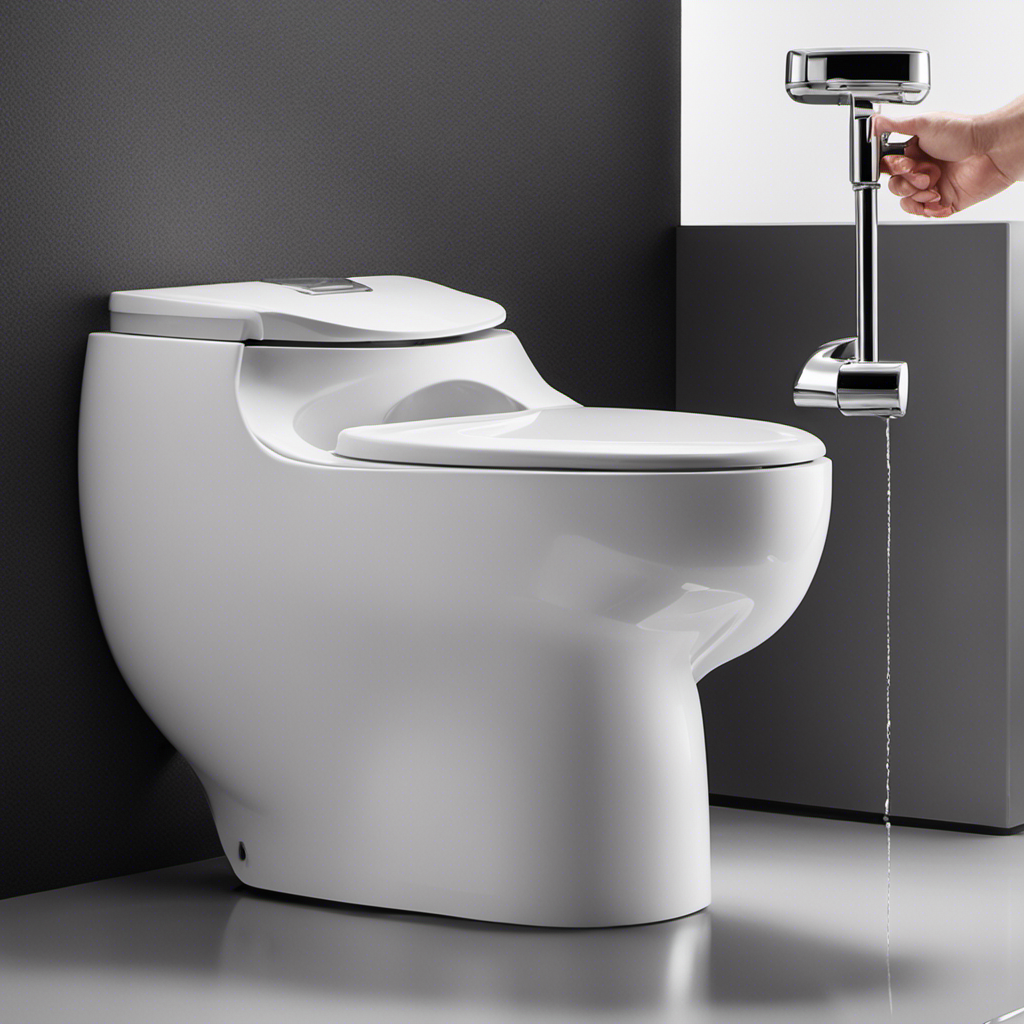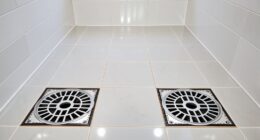Have you ever wondered why our house toilets won’t flush? Well, fear not, for we have the answers!
In this article, we’ll delve into the technicalities of low water levels, clogged drains, faulty flappers, blocked vent pipes, and malfunctioning flush valves.
By understanding these issues, we can master the art of toilet flushing and ensure a smooth experience every time.
So, let’s dive in and uncover the secrets behind our stubbornly uncooperative toilets!

Key Takeaways
- Low water level in house toilets can be caused by toilet bowl cracks or water supply issues.
- A clogged drain is a common issue that can prevent proper flushing of house toilets.
- A malfunctioning flapper can cause toilets to fail to flush properly.
- A blocked vent pipe can also cause toilets to fail to flush effectively.
Low Water Level
Sometimes we notice that our house toilets don’t flush properly due to a consistently low water level. This issue can be caused by various factors, including toilet bowl cracks and water supply issues.
Toilet bowl cracks can occur over time due to age, wear and tear, or improper installation. These cracks can lead to water leakage, resulting in a decreased water level and weakened flushing power.
Another common cause of low water level is water supply issues, such as a clogged or partially closed water valve, a malfunctioning fill valve, or a problem with the water pressure.
It’s important to address these issues promptly to ensure efficient flushing and prevent further damage to the toilet system.

Clogged Drain
One common issue that can prevent our house toilets from flushing properly is a clogged drain. When the drain is clogged, water struggles to flow from the toilet bowl into the pipe, resulting in poor flushing or no flushing at all.
A clogged drain can occur due to a variety of reasons, such as the accumulation of toilet paper, foreign objects, or even tree roots invading the pipe. To identify a clogged drain, look for signs like slow drainage or gurgling sounds when flushing.
To resolve the issue, it’s important to locate and remove the source of the blockage. This can be done using a plunger, a plumbing snake, or by calling a professional plumber.
Regular maintenance, such as avoiding flushing non-flushable items, can help prevent future pipe blockages.

Faulty Flapper
Our toilets may fail to flush properly due to a malfunctioning flapper. The flapper is an essential component of the toilet’s flushing mechanism that controls the release of water from the tank into the bowl. When the toilet handle is pressed, it lifts the flapper, allowing water to flow into the bowl and create a strong flushing action.
However, if the flapper is faulty, it may not seal properly, leading to water leakage and an incomplete flush. This can result in a weak flush or a toilet that won’t flush at all. To fix this issue, the flapper should be inspected and replaced if necessary.
Now, let’s move on to the next potential cause of toilet flushing problems: a blocked vent pipe.
Blocked Vent Pipe
To continue our discussion from the previous subtopic, a common issue that can cause toilets to fail to flush properly is a blocked vent pipe.

The vent pipe is a crucial component of a toilet’s plumbing system as it helps to regulate air pressure, allowing wastewater to flow freely. When the vent pipe becomes blocked, it can lead to a buildup of pressure in the pipes, preventing the toilet from flushing effectively.
There are a few potential causes for a blocked vent pipe, including sudden temperature changes and structural issues. Sudden temperature changes can cause the vent pipe to expand or contract, leading to blockages. Additionally, structural issues such as debris or animal nests can obstruct the vent pipe.
Understanding the causes of a blocked vent pipe is essential in troubleshooting toilet flushing issues.
Now, let’s move on to the next subtopic, which is the malfunctioning flush valve.

Malfunctioning Flush Valve
Continuing from the previous subtopic of a blocked vent pipe, we may encounter toilet flushing issues due to a malfunctioning flush valve. The flush valve is responsible for regulating the water flow from the tank to the bowl during a flush. When it malfunctions, it can lead to weak or incomplete flushes, or even the inability to flush at all.
Toilet repair for a malfunctioning flush valve typically requires the expertise of a professional plumber. They’ll assess the valve and determine if it needs to be repaired or replaced. Repairing the flush valve may involve replacing worn-out or damaged components, such as the flapper or the seal. In more severe cases, the entire flush valve assembly may need to be replaced.
If you’re experiencing toilet flushing issues and suspect a malfunctioning flush valve, it’s best to consult a professional plumber to ensure a proper repair.
Frequently Asked Questions
Why Is My Toilet Not Flushing Properly Even Though There Is Enough Water in the Tank?
Even with enough water in the tank, toilets may not flush properly due to issues with water pressure. It’s important to check for blockages in the pipes or a malfunctioning flush valve.

How Can I Fix a Clogged Drain in My Toilet?
To fix a clogged drain in our toilet, we can try DIY techniques first, such as using a plunger or a toilet auger. If those fail, we may need to call professional toilet repair services for assistance.
Are There Any Signs or Symptoms That Indicate a Faulty Flapper in My Toilet?
There are several signs of a faulty flapper, such as a continuously running toilet or water leakage. To replace a faulty flapper, turn off the water supply, remove the old flapper, and install a new one.
What Are the Common Causes of a Blocked Vent Pipe in the Plumbing System?
Common signs of a blocked vent pipe include gurgling noises, slow draining, and foul odors. Possible solutions involve using a plumbers snake or high-pressure water jetting to clear the obstruction.
How Can I Identify and Repair a Malfunctioning Flush Valve in My Toilet?
To troubleshoot a malfunctioning flush valve, start by checking the toilet flush handle. If it’s loose or broken, replace it. Next, inspect the flush valve for any signs of damage or blockage. Repair or replace as needed.

Conclusion
In the journey of maintaining our house toilets, we encountered various obstacles, from low water levels to clogged drains and faulty flappers. However, we learned that by addressing these issues promptly and with the right tools, we can restore the functionality of our toilets.
Just like a ship navigating rough waters, our toilets can sail smoothly again, bringing us peace and comfort in our daily lives.
So let’s be vigilant, and ensure our toilets remain a reliable vessel on which we can depend.










